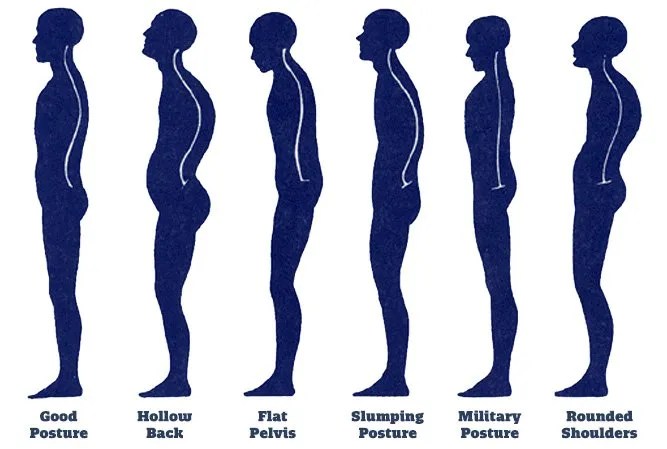
Posture refers to the position of the skeletal system, particularly the spine of an individual at a given time. This posture may arise from birth, or because the body has become accustomed to a particular position. In most cases posture arises from the influences of environment, or from external causes. Sometimes occupation can play a big role in posture.
Other times habit, and psychology can also play a big role in deciding the outcome of a persons’ physical appearance, including the physical posture.
A defective posture can be a problem because it can be painful, and can inhibit free movement. Therefore, understanding posture and postural defects can be a good way of protecting one’s overall health and wellness.
What Is Posture?
Posture is the way a person holds his body. Posture can be divided into static posture which is the way a person holds his body when standing still, and dynamic posture which is the way a person holds his body when moving. A healthy posture is free, and fluid, and should not cause any pain.
What Does A Healthy Posture Look Like?
What exactly constitutes a healthy posture is a matter of debate; however, it is generally accepted that the spine should be somewhat straight. This applies to both the sitting and standing posture; the goal should be to consciously regulate the way we position our bodies so that we can hold our bodies straight.
Granted; the back of the neck is bent slightly inward, while the upper back bends slightly outwards. The lower back bends slightly inwards.
Especially among women is not uncommon to have big backsides, even though most of that is flesh and fat, not really having to do with the pelvic bones.
What Are Postural Defects?
Postural Defects are abnormalities that occur in the way and manner a person holds his body either when static or when in motion. These are described as minor single deviations from correct posture. There can be more than one abnormality affecting a person; and static postural defects can also cause dynamic postural defects.
These postural defects can be repaired with the use of appropriate exercises, passive or active.
Examples Of Postural Defects
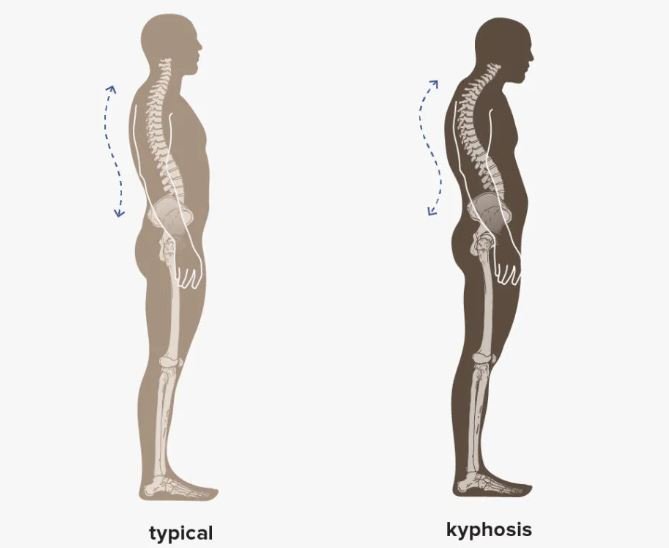
Example of normal and Kyphosis posture
1. Kyphosis Posture
Kyphosis posture is best described as a posture in which the person has rounded shoulders, which causes them to have an excessive back curve and their spines to be hyperextended. They often look like they are bent forward, or that they have a hunched back, while their cheat is depressed.
Kyphosis posture problems are common amongst the elderly, people who spend long hours sitting at a desk, heavy-breasted women, obese people, as well as very tall people. Sometimes it can also be caused by protracted illnesses, changes in the body (like pregnancy), muscle weakness and accidents which cause fractures.
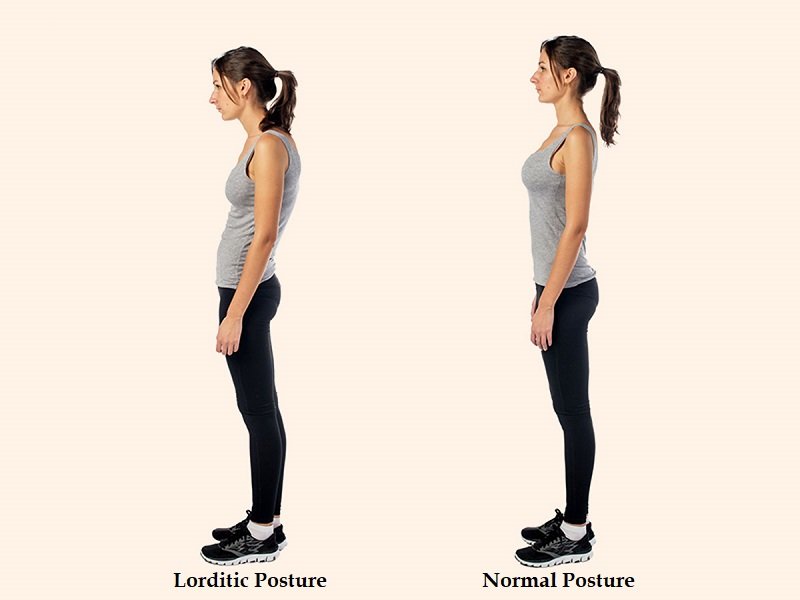
Example of Lordotic Posture
2. Lordosis Posture
Lordosis Posture is best described as an excessive curve in the lower back. Naturally, we all have some curves in the lower back, but people with a Lordosis Posture have too much curve in their backs, and this often comes with an increased pelvic tilt. As a result of this back curve, the stomach and head are pushed forward too.
A person with this Posture may not be very agile, and he may not have the body balance and athleticism of a normal person. Lordosis posture is common amongst truck drivers and pregnant women. It has also been observed among obese people, or heavy eaters.
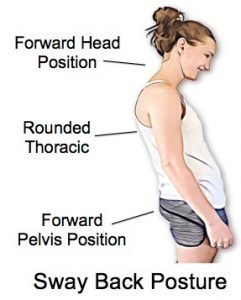
Sway Back postural defect
3. Sway Back
A sway back posture is where the lower back is pushed forward, and then the upper back is pulled backward. When standing upright, a person with swayback will look like he is leaning backwards. This is a misalignment of the body; the pelvis is pulled forward, past the centre of gravity.
To compensate for the shift in gravity, people with swayback often walk with their heads bowed. In a sitting position, they often poke their heads forward, and their shoulders are often protracted. Sometimes it seems like their chests are sunken, and they need strong or tight abdominal muscles.
It is common to find Swayback among pregnant women; although many teenagers bring it upon themselves because they think it makes them look cool, and that they have swag.
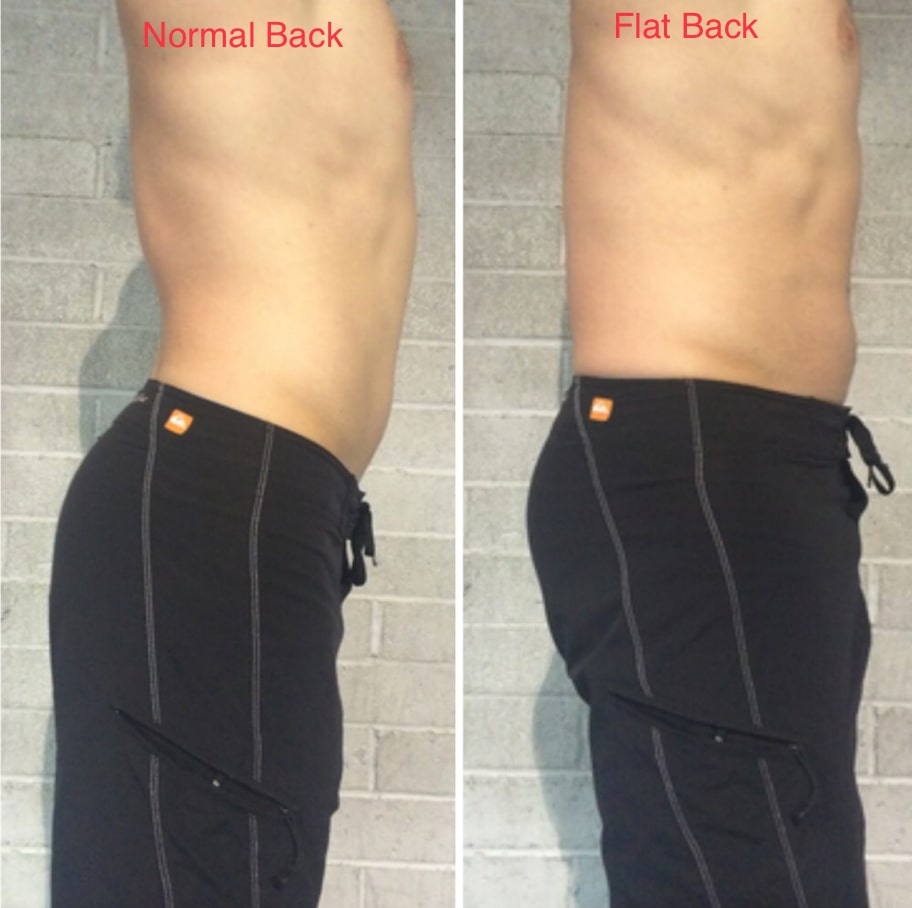
Flat Back Posture
4. Flat Back
Instead of the natural curves of the back, or even the abnormal curves, it is possible that the spine’s alignment is flatter than usual for some people. This can make the pelvis to become tucked in, and therefore a person with flat back can stoop forward. Sometimes people with this anomaly cannot stay standing for long periods, and they can have pains in their backs and legs.
Flat back can occur at birth, and it can also happen as a result of surgery.

Example of Scoliosis
5. Scoliosis
Scoliosis is an anomaly in which the spine of a person may be curved side ways, rather than inwardly or outwardly. Scoliosis may be a singular curve in the spine or multiple curves. It other words, it may look like a “C” or an “S.”
Scoliosis may be caused by conditions such as cerebral palsy and muscular dystrophy. However, the reasons why it occurs in children are not yet known.
Poor Posture In Other Parts Of The Body
Poor Posture is not only to be found in the back or spine and such areas. Poor posture in the spine can lead to nerve damage because it makes the nerves compressed. This can then trigger leg or hand pain.
Poor posture in the form of crossing the legs for extended periods can also affect blood flow to the legs, and can cause one to have varicose veins.
Knee and Foot pain can also arise when we sit incorrectly for long hours, or when we cross our legs. This can then affect the way we stand or walk, which may further the condition because such a person would need to shift the weight of his body, thus causing damage to the spine.
Poor posture can affect body function. Slouching the shoulders forward can reduce the amount of air getting into the lungs. This can cause fatigue, tiredness, and over time, this can reduce lung capacity.
Bad posture can cause pain in the neck. This is because the head is naturally heady, and when we do not balance the weight evenly among the muscles of the neck and shoulders it can cause problems. For example; when we spend too many hours staring down at our phones, or looking down at something, we cause the muscles of the neck to be overworked; leading to pain.
This is not an exhaustive list of the effects of bad posture through out the body; some known effects of bad posture are not listed here, while research is still on going about the ways that bad posture can affect us.
Can Poor Postural Defects Be Avoided?
For most people, information is all that is necessary to correct any traces or poor posture, and to completely avoid any other conscious or unconscious ways via which one may be damaging the body; including ways bordering on bad posture.
However, for some this will mean a complete change in the lifestyle, and in the way we do things. Here are some of the things that can be done to counter postural defects:
1. Move Around A lot
The body is designed to be moved. Even a good posture, when held for too long becomes a bad posture. Therefore, even when working desk-jobs, it is important that we learn to move around. Researchers have recommended getting up from the desk every 30 minutes to walk around. If you work in a large office, find an excuse to walk around, and use the stairs instead of the elevators where possible.
2. Relax Your Shoulders
A common mistake that people make is to hunch their shoulders when working at a desk or a computer. Well, this is a very bad idea because hunching your shoulders can trigger a long list of problems, starting with the muscles in your chest area which can become weak. Furthermore, hunching the shoulders can reduce the amount of air that enters into the lungs.
Without enough air entering the lungs, one would become weak, fatigued, and possibly drowsy. Furthermore, with the breathing capacity hindered, the lungs could just not be able to supply enough air to the body, meaning that one’s physical capacity would be hindered.
3. Adjust The Height Of Your Computer Screen
Another problem that comes with working desk jobs is that one tends to spend a lot of time looking downwards, which can cause a lot of pressure on the neck because it has to hold up the head in the unnatural position. To counter that, raise the height of your computer screen so that you do not have to look down.
Depending on your individual height and size, it may also be a good idea to get a bigger keyboard. Some researchers have suggested that a bigger keyboard will help big, tall individuals spread their bodies out, rather than tighten their bodies in a way that would force the elbows to rest on the abdomen. They advise that the wrists rest on the table, while the elbows hang freely.
4. Stretch Your Feet
There are new innovations that can help one work at the computer or laptop while standing for a few minutes or hours. Aside from that, one can get up at regular intervals to get the blood flowing to the lower extremities.
Even while at the desk in a sitting position, it is important to place both feet on the ground, and stretched out in front of you. Folding the legs under the seat will put undue pressure on the knees, and also on the lower back.
Some researchers further add that your feet must be planted flat on the ground; and your knees must bend in a right angle.
5. Sleep Correctly
The posture we assume when we sleep is also quite important; remember we also spend a lot of time on our beds every day. Some researchers indicate that the worst sleeping position is sleeping on our stomachs because it strains our necks, and lower backs.
Instead of this in-proper sleeping posture, some researchers advise that we adopt a position in which we sleep on our sides, if possible, with a pillow in between our legs.
How Can We Correct Postural Defects?
Sometimes, postural defects have gone quite far before we become aware of them. Even when they have gone beyond what can be saved by preventive measures; when we can no longer resolve them by ourselves; most postural problems can be corrected by visiting Chiropractors or Physiotherapists.
a. The first step of course is to assess postural habits so as to discover the unconscious reasons why the subject holds his body in the way that he does.
b. Education And Training on How To Maintain Good Posture is usually the next step; this will involve visual aids, and also the therapist adjusting the subjects body physically so as to get the correct posture.
c. Manual therapy and soft tissue massage will help stimulate the body so that one feels comfortable sitting in the correct position, and has the strength to hold the position for long periods of time.
d. Dry needling may sometimes be used. This is a very similar treatment to acupuncture; the therapist inserts tiny needles in certain areas of the body to help ease pain, and to stimulate the muscles in those areas.
e. Posture Taping is a popular way of correcting wrong posture; it involves the use of Kinesiology Tapes, which are flexible but very durable tapes used to hold the body in certain positions, while the subject is allowed to go about his or her regular business. With time the person learns to hold his body in the way it is regularly taped, and so the bad posture is solved.
f. Electrotherapy involves the use of electric shocks. It could be used to stimulate the muscles; but may also be used as a deterrent; to psychologically train the subject not to take up the wrong posture.
g. Joint Mobilization and Corrective Exercises can also be employed to make the subject stronger and fitter; thus better able to hold the proper postures.
h. Other corrective measures may be employed; such as Activity Modification Advice, Advice Regarding Workstation and Equipment, or even Career Change, or Pilates Exercises.
In summary, most posture and postural defects are borne activities from our daily lives. The positives from this article is that it can be corrected and prevented via the points listed above. Kindly add your comments below based on experiences and remedy applied so other readers can gain from them.



